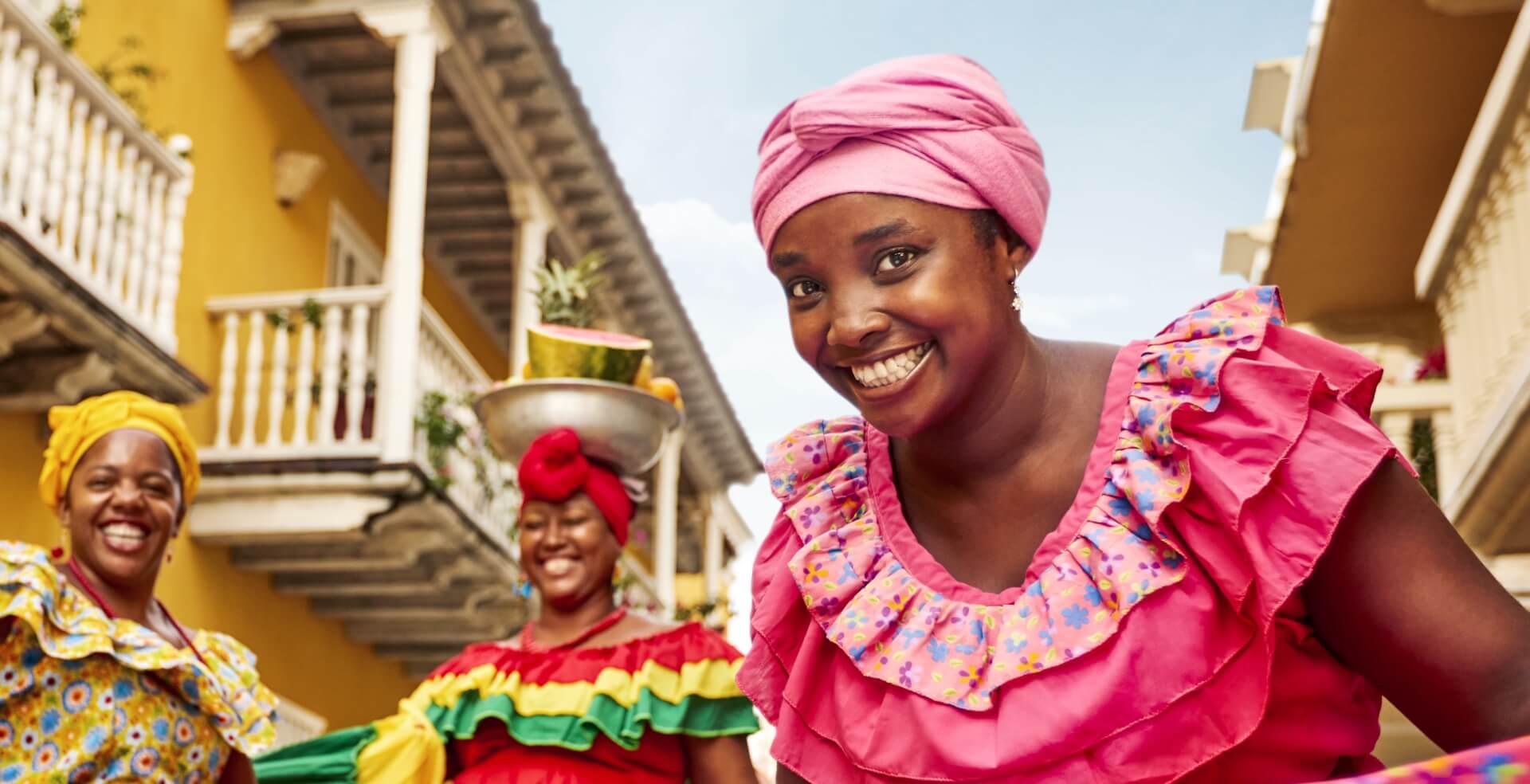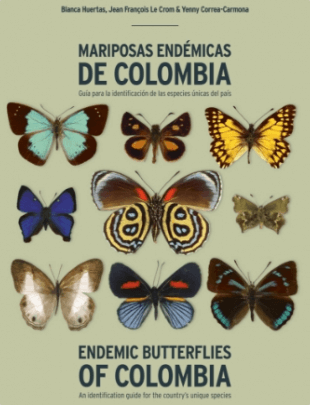One of Colombia’s characteristic features is the wealth of its pre-Columbian vestiges. Hundreds of archaeological parks and museums around the country amaze their visitors with varied samples from the civilizations that inhabited our land.
Archaeological tourism through our various regions and sites allows visitors their own discovery of the traces left by the cultures that inhabited our land, their ways of life, social organization, degree of development, food, beliefs, and constructions.
Protected by valleys, mountains, and jungles, there are many valuable legacies left by of our ancestors. Tombs, gigantic stone statues, rock paintings, and precious metal articles belonging to cultures as diverse as the Tayrona on the Caribbean Coast and the Calima in western Colombia are only a few.
Muisca Raft in Bogotá

In the Gold Museum, right in the center of Bogota, we encounter a magnificent remnant of the Muisca culture: the Muisca Raft.
Bogota´s culture archeological destinations:
This gold figurine, dating back to between 1200 and 1500 B.C., evokes the legend of El Dorado and the Cacique Guatavita, the famous Indian chief. Gold pieces, as significant and scarce as this one, were used as offerings in ritual ceremonies.
Facatativá Archaeological Park
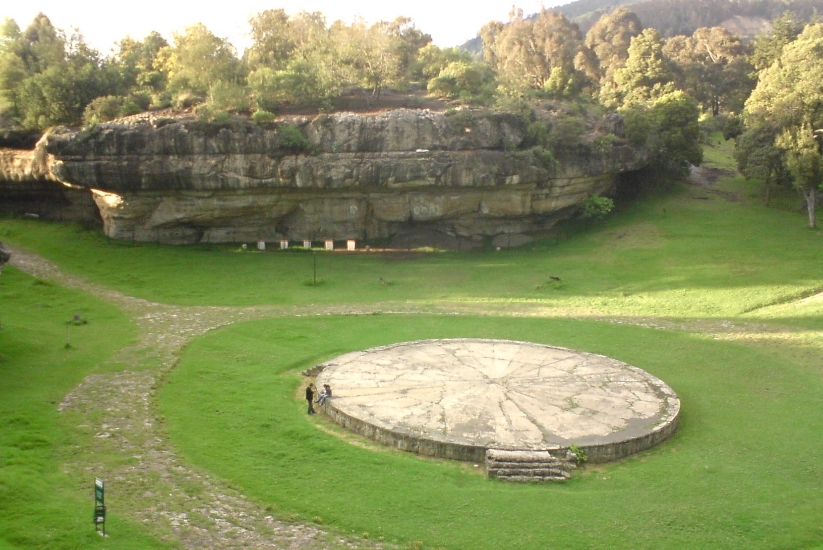
Just 40 km from Bogotá, on the savanna by the same name, in the municipality of Facatativá, lies the Piedras del Tunjo Archaeological Park. Rocky shelters, rock paintings, and marvelous scenery are the main attractions of this 40-hectare park.
The Park contains immense metamorphic rocks that resulted from the intense pressure of the earth during the development of the lithosphere. Rocks like these formed the floor of the lake that probably covered the Savanna of Bogotá. Sixty murals of rock paintings are scattered haphazardly throughout the Park.
Sixty murals of rock paintings are scattered haphazardly throughout the Park.
Alto de los Ídolos y Alto de las Piedras Archaeological Park
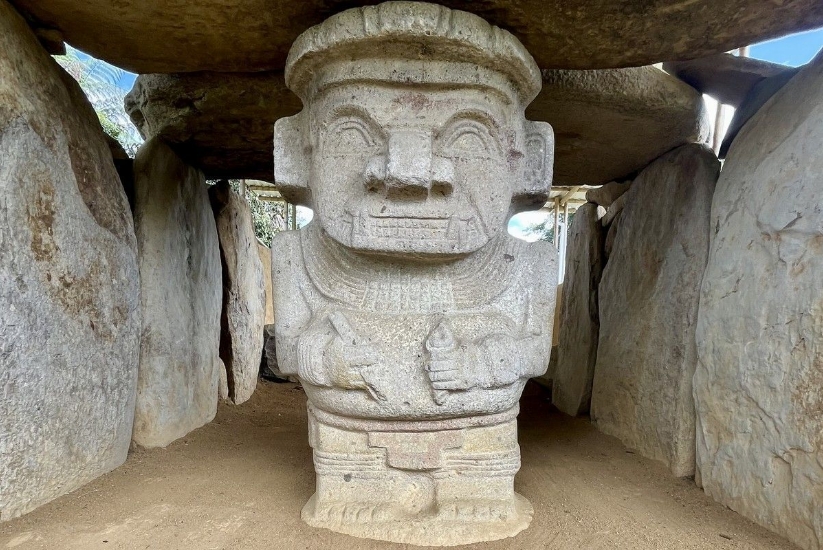
The western part of Colombia provides abundant evidence of pre-Hispanic cultures. The Alto de los Ídolos y Alto de las Piedras Archaeological Park is located in part of what is today the department of Huila.
The Alto de los Ídolos Park, declared a World Heritage Site by UNESCO, contains the best-preserved funeral complexes of the Augustinian culture. The Park stands out for the particular characteristics and dimensions of its anthropomorphic and zoomorphic sculptures, the presence of sarcophagi and ceremonial tubs in stone, and the paintings on statues and on the walls of sepulchers and small temples.
Just 10 km north of the Alto de los Ídolos is the Alto de las Piedras section of the Park. It consists mainly of four sculptures and tombs that still preserve their original colors. The most outstanding sculpture is a fanged human figure with a depiction of another character with human and animal features on its head and body.
The most outstanding statue in the Alto de las Piedras Park is a fanged human figure with a depiction of another character with human and animal features on its head and body.
San Agustín Archaeological Park
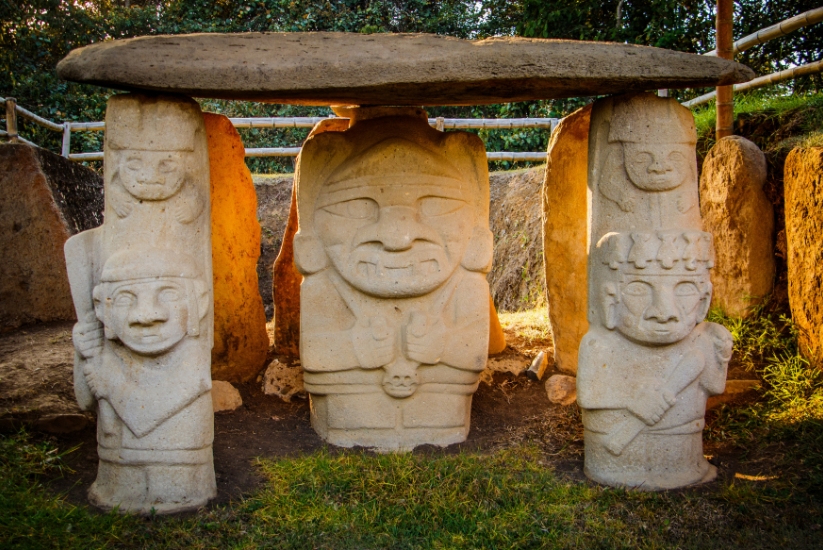
The department of Huila region also encompasses the San Agustín: nicknamed “a mystery carved in stone”. Expert archaeologists from around the world admire the park for its more than 500 imposing statues carved in stone in accordance with the mythology of the Indian sculptors.
Most of the statues are part of the funeral pieces of the ancient inhabitants of the region and are related to burial rites, the spiritual power of the dead, and the supernatural world.
Tierradentro Archaeological Park
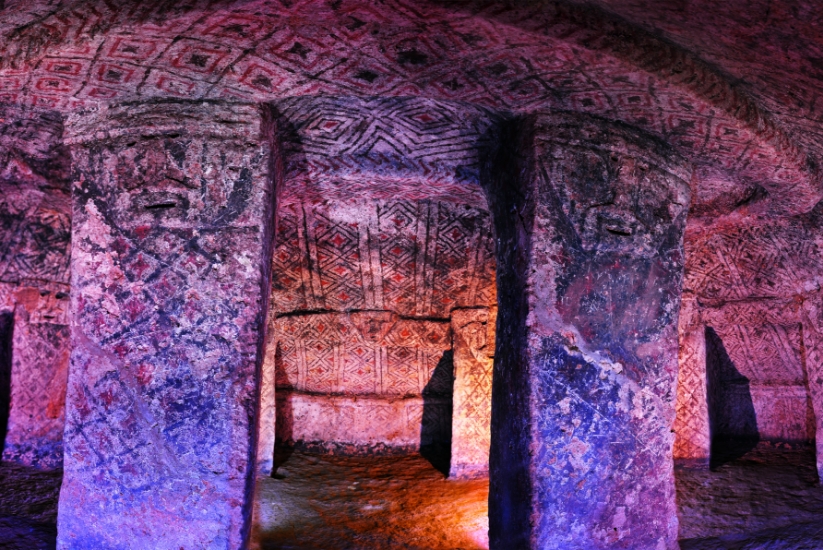
As if Pre-Hispanic cultures had chosen the mountains of western Colombia for their settlements, the Tierradentro Archaeological Park is located near the border of the departments of Huila and Cauca. It is made up of individual and collective tombs.
The Park is divided into the following sections: Altos de Segovia, Alto del Aguacate, Alto de San Andrés, Alto del Duende, and El Tablón. All of them contain tombs decorated with sculptures, paintings, and murals decorated with red and black geometric motifs on a white background.
Calima Darién Archaeological Museum
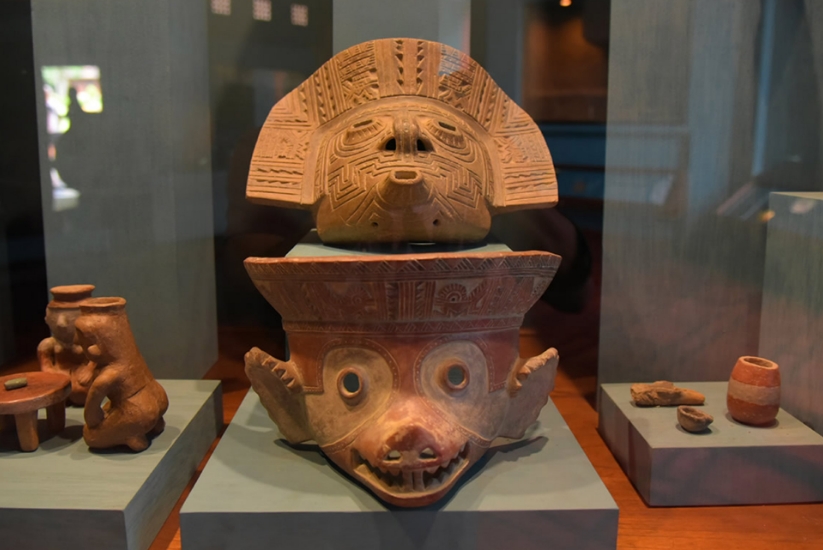
Not far from Cali, the Calima Darién Archaeological Museum collects pieces from the Calima culture.
Somewhat further west, near the city of Cali, lies theCalima Darién Archaeological Museum, which was created for the purpose of collecting pieces from the Calima culture and recreating the life of its members.
The Museum offers tours of its exhibit hall, where ceramic pieces in different colors, precious metal pieces, vessels, and other objects succeed in recreating a trip through 10,000 years of history.
Ciudad Perdida
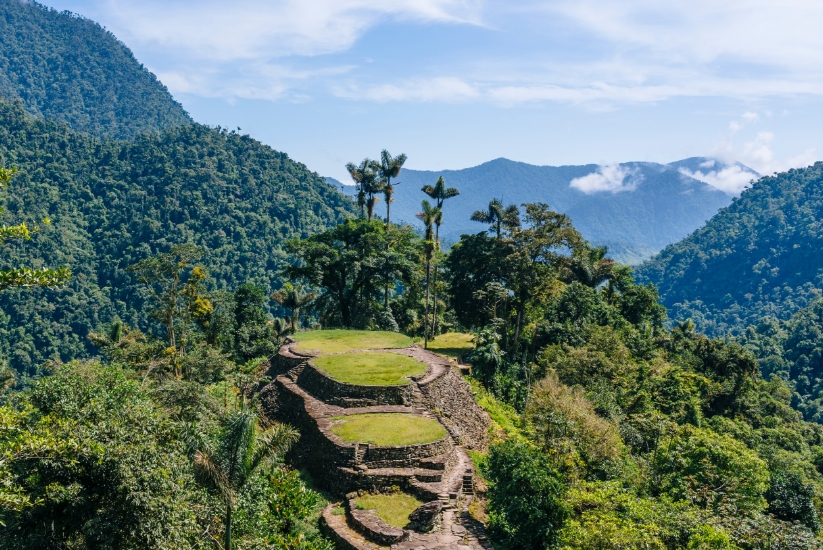
To end a tour of northern Colombia, on the Atlantic Coast, we arrive atCiudad Perdida near Sierra Nevada de Santa Marta.
Ciudad Perdida was made up of over 250 terraces distributed in eight “districts”, in each of which its inhabitants could live, work, and perform religious ceremonies.
The Ciudad Perdida Archaeological Park, also known by its Indian name of Teyuna and translated as ‘Lost City’, is located on the Sierra Nevada de Santa Marta, on a margin of the Buritaca River.
To get there, it is necessary to cross forests full of exotic fauna and flora, hanging bridges, mountains, and waterfalls. There, in the midst of a jungle with 40- and 50-meter trees, lie the ruins of the great Tayrona Empire, whose characteristics include a sophisticated integration of nature and civilization and marvelous stone architecture.
Ciudad Perdida was made up of over 250 terraces distributed in eight “districts”, in each of which its inhabitants could live, work, and perform religious ceremonies. A network of stone paths and stairs, which served as well to get to the cultivation sites, joined the various sectors of the city.
This great archaeological wealth proves that this kind of tourism can be a memorable experience, regardless of whether a traveler decides to go to western, northern, or central Colombia. Tours through the various sites that evoke our ancestors offer visitors the option of getting to know their arts and sciences and, consequently, their worldview.







